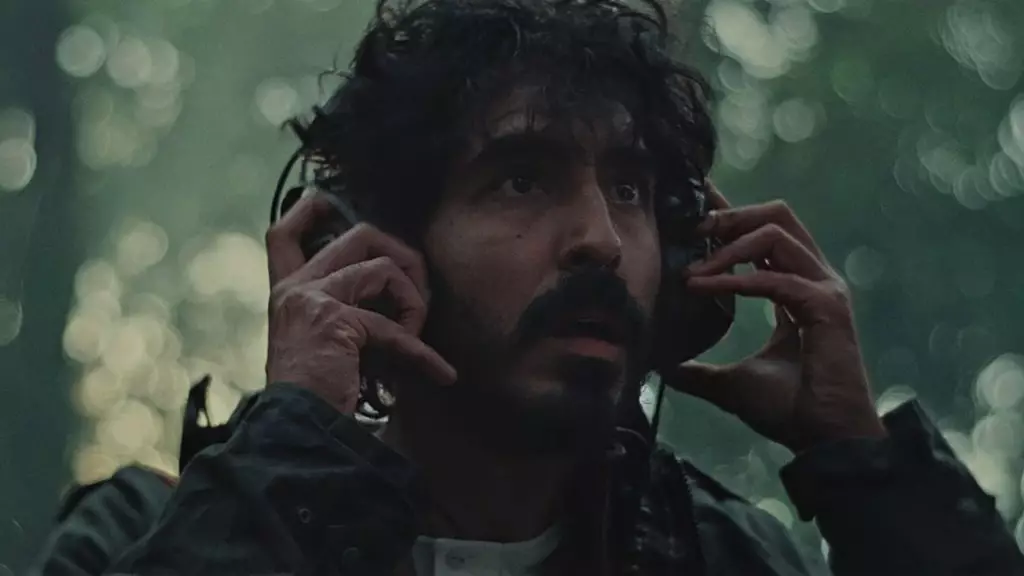In ‘Rabbit Trap,’ British writer-director Bryn Chaney crafts a haunting journey through the interplay of sound and human emotion, drawing deeply from Celtic folklore. The film, a feature debut, is set against the stark backdrop of the Welsh countryside in 1973, where the complexities of artistic creation get ensnared in a web of ancient mysticism. Central to this exploration are two characters, Darcy (played by Dev Patel) and Daphne (Rosy McEwen), who embody the raw intensity of a creative partnership that teeters on the edge of madness and inspiration.
Upon retreating to an isolated cabin, this influential musical duo intends to channel their energies into their forthcoming album. However, Darcy’s misguided attempt to capture an otherworldly sound leads him down a treacherous path, awakening entities from local lore. This narrative becomes a vivid metaphor for the chaotic nature of artistic expression—where inspiration and horror often reside in tandem. Chaney’s deft direction reminds audiences that the pursuit of creativity is not innocuous; it is fraught with dangers both external and internal.
What sets ‘Rabbit Trap’ apart is its profound commitment to sound as a critical narrative device. Rather than merely complementing the visuals, sound emerges as a character in its own right through the meticulous work of composer Lucrecia Dalt and sound designer Graham Reznick. The auditory landscape crafted for the film envelopes the audience, creating an immersive experience that reflects the tumultuous emotional currents within the characters. As Darcy’s recordings blur the line between the known and the unknown, they become the conduit through which ancient energies manifest, articulating fears and desires typically left unvoiced.
The film underscores a poignant truth articulated by Darcy himself: “sound is a ghost … and your body is the house it haunts.” This idea resonates not just throughout the film’s arch, but also through Darcy’s personal struggles with sleep paralysis, where the intangible darkness that plagues him finds expression through sound. The terror of unspoken words and suppressed trauma reverberates through every audio nuance, unraveling truths blurred by the fog of creativity.
The chemistry between Patel and McEwen anchors the narrative, illuminating the complexities of their dynamic. As Darcy becomes increasingly consumed by the sounds he captures, Daphne attempts to navigate the chasm that grows between them. Their intimate moments evolve into spellbinding sequences, such as a sex scene underscored by ethereal music—an evocative representation of the thin veneer separating ecstasy from despair in creative partnerships.
The film delves into the dark recesses of Darcy’s psyche, his profound insecurities seeping into their once-thriving relationship and impacting Daphne’s creative spirit. As he becomes a vessel for ancient forces, the stakes escalate: will their bond be a source of liberation or a damning entrapment? The film wields this tension skillfully, ultimately revealing the fragility of emotional connections when confronted with the weight of personal demons.
The introduction of a nameless child, played by Jade Croot, acts as a catalyst within the narrative, bringing a mixture of innocence and foreboding. His fascination with their music and whimsical tales of rabbit hunting imbue the story with a deeper sense of folklore. Croot’s performance provides a powerful counterbalance, as his character’s empathetic nature envelops Darcy and Daphne. The emergence of this peculiar youth serves to draw out the complexities of their relationship, allowing the couple to confront their buried traumas.
Ultimately, ‘Rabbit Trap’ transcends a mere examination of artistic struggle, weaving in elements of ancient mystique and emotional exploration. It compels viewers to reckon with the inherent darkness intertwined with creativity and the lengths individuals will go to unearth inspiration. Bryn Chaney’s debut illustrates not only the weight of sound and silence but also the haunting echoes that linger in the depths of artistic ambition. As the film unfolds, it becomes clear that the true monsters may not be the ones stirring in the forest, but rather those lingering within, waiting to be confronted and understood.


Leave a Reply